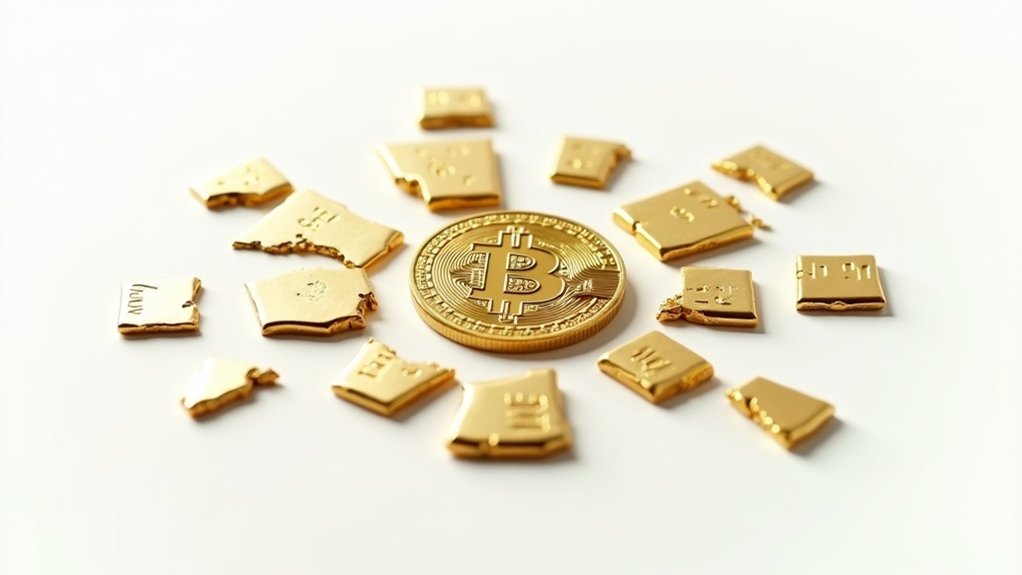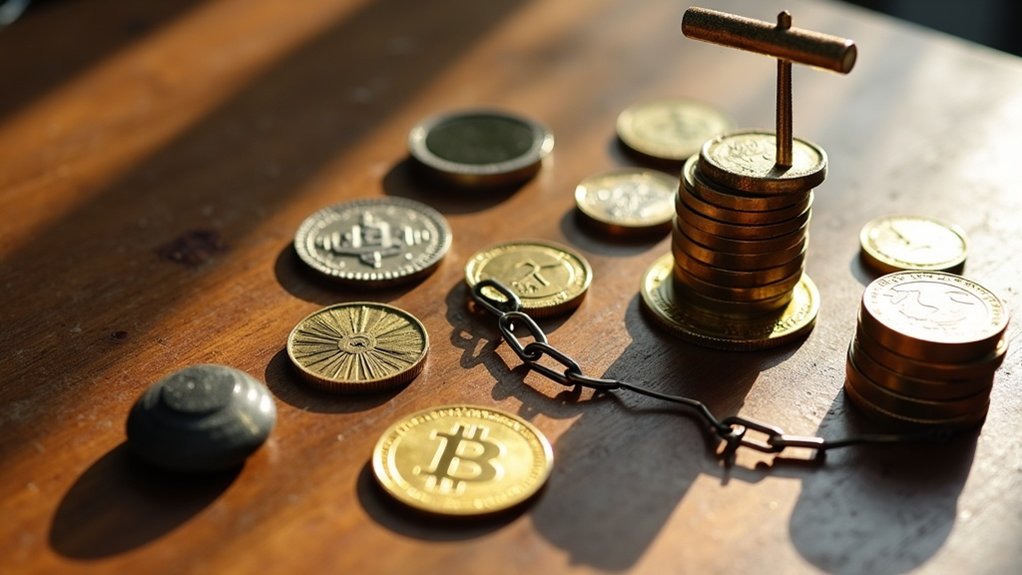ERC-20 tokens are standardized digital assets on the Ethereum blockchain. Created in 2015 by Fabian Vogelsteller, they follow specific rules ensuring universal compatibility across wallets, exchanges, and applications. They’re fungible tokens with mandatory functions like transfer and balanceOf. ERC-20s power everything from stablecoins to utility tokens, serving as the backbone of DeFi. Their standardization prevents chaos in the crypto ecosystem. The full story gets even more interesting.
ERC-20 tokens dominate the Ethereum ecosystem, and for good reason.
These digital tokens live on the Ethereum blockchain and follow a specific standard that makes them universally compatible.
Created back in 2015 by Fabian Vogelsteller with input from Vitalik Buterin, they’ve become the backbone of countless blockchain projects.
No exaggeration—they’re everywhere.
The beauty of ERC-20 tokens? Standardization.
Every token follows the same rules, making them instantly recognizable to wallets, exchanges, and applications across the Ethereum network.
They’re completely fungible too, meaning one token equals another token of the same type.
No special snowflakes here.
Just perfectly interchangeable digital assets.
These tokens work through mandatory functions coded into their smart contracts.
Things like totalSupply, balanceOf, and transfer.
Boring names, essential functions.
Some optional elements exist too—like giving your token a name, symbol, and decimal places.
Most developers include these anyway.
Makes sense.
The ERC-20 standard changed everything for Ethereum.
Without it, we’d have a mess of incompatible tokens that couldn’t talk to each other.
Instead, we got a thriving ecosystem where tokens work seamlessly across platforms.
Revolutionary, really.
Creating an ERC-20 token isn’t rocket science.
Deploy a smart contract, define your supply, add some basic functions.
Pay some Ether as a network fee and—boom—you’ve got your own token.
That simplicity helped fuel the ICO craze of 2017.
Not always a good thing.
In practice, ERC-20 tokens serve multiple purposes.
Some function as utility tokens for accessing services.
Others represent securities or ownership rights.
A prime example is Wrapped Ethereum, which allows native ETH to be converted into an ERC-20 token for broader DeFi compatibility.
Stablecoins like USDC? ERC-20 tokens pegged to real-world assets.
Popular stablecoins such as Tether (USDT) operate using the ERC-20 standard for seamless integration with decentralized finance applications.
The formal specification for ERC-20 tokens is outlined in EIP-20, which defines all the required functions and events.
The applications seem endless.
What makes them special isn’t complexity—it’s consistency.
They follow rules.
They play nice with others.
And that’s exactly what the crypto world needed: a little less chaos, a little more standardization.
The humble ERC-20 delivered just that.
Frequently Asked Questions
How Do ERC-20 Tokens Differ From NFTS?
ERC-20 tokens are fungible—each one identical to another, like trading one dollar for another. NFTs? Not interchangeable. Each is unique.
ERC-20s follow specific token standards for seamless transactions across platforms. NFTs primarily use ERC-721 standards, preserving their uniqueness.
Think of ERC-20s like currency. Bitcoin-ish. NFTs are more like collectibles—digital Picassos, if you will.
One’s about liquidity, the other’s about owning something nobody else has. Pretty straightforward difference, really.
Can ERC-20 Tokens Be Converted to Ethereum?
Yes, ERC-20 tokens can absolutely be converted to Ethereum.
Pretty simple process.
Users swap their tokens for ETH on platforms like Paybis or Coinbase.
Pick your token, select ETH, enter the amount, provide a wallet address—done.
The converted ETH can then be used for gas fees or staking.
Just watch out for security risks on some decentralized exchanges.
Market fluctuations happen, obviously.
Fees vary between platforms.
Not rocket science.
What Security Risks Exist With ERC-20 Tokens?
ERC-20 tokens face numerous security threats.
Smart contracts can contain critical bugs—integer overflows that mess with balances, reentrancy attacks that drain funds, and unprotected functions anyone can access. Yikes.
Front-running attacks are common too, where traders exploit pending transactions.
Even established frameworks like OpenZeppelin have vulnerabilities.
The space is rife with scams and phishing attempts.
And remember: transactions are irreversible. Once your tokens are gone, they’re gone for good.
How Are ERC-20 Tokens Taxed in Different Countries?
Taxation of ERC-20 tokens varies wildly across the globe. The US treats them as property, subject to capital gains tax. Germany? Hold for a year and you’re tax-free. Singapore has no capital gains tax for individuals—nice break there.
Meanwhile, the UAE and Cayman Islands offer zero-tax environments in their territories. Some countries like India impose flat taxes with no loss deductions.
Pretty inconsistent, honestly. Crypto-friendly nations like El Salvador and Malta have created specific frameworks to attract digital asset businesses.
Can ERC-20 Tokens Work on Blockchains Other Than Ethereum?
ERC-20 tokens are designed specifically for Ethereum, but they’ve spread their wings.
They work perfectly on EVM-compatible chains like Polygon and Binance Smart Chain.
No surprises there—same code base, same rules.
But Solana or Tron? Nope. Those blockchains have their own token standards.
Moving ERC-20s between non-Ethereum chains requires bridges—digital highways connecting these separate worlds.
The standard’s influence is undeniable though, inspiring similar token models across the crypto universe.









